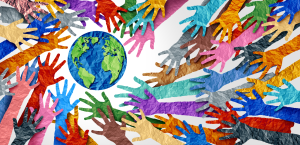
What does Solidarity Feel Like?
Introduction
Solidarity is a powerful force that brings people together in support of a common cause. It transcends boundaries and connects individuals from diverse backgrounds, creating a sense of unity that can lead to positive social change. While solidarity is often discussed in terms of emotions, beliefs, and actions, there is another dimension to it that is equally important and often overlooked: somatics. Somatics refers to the embodied or physical aspects of our experience, and understanding how it plays a role in solidarity can deepen our appreciation for this essential human phenomenon.
The Body-Mind Connection
To comprehend the somatics of solidarity, it’s crucial to recognize the intricate connection between the body and mind. Our thoughts, emotions, and physical sensations are interwoven, and they influence each other in subtle ways. When we feel a sense of solidarity with others, our bodies respond in various ways, creating a unique somatic experience.
- Empathy and Mirror Neurons: Empathy, a key component of solidarity, involves understanding and sharing the feelings of others. Mirror neurons, specialized brain cells, play a role in this process. When we see someone in pain or distress, our mirror neurons activate, causing us to physically and emotionally resonate with their experience. This somatic response helps us connect on a deeper level.
- Body Language: Our bodies communicate our feelings and intentions through nonverbal cues such as posture, facial expressions, and gestures. In moments of solidarity, our body language often becomes more open and inviting. We lean in to listen, make eye contact, and offer supportive touches like hugs or handshakes. These physical expressions reinforce our emotional connection.
- Physical Proximity: Solidarity often involves physical presence. Whether at a protest, a community event, or a gathering of like-minded individuals, the act of being physically close to others creates a somatic experience of togetherness. It can generate a palpable sense of unity, amplifying the shared purpose.
- Breath and Relaxation: Deep breathing and relaxation exercises can be powerful tools for cultivating solidarity. In moments of tension or conflict, consciously slowing down our breath and relaxing our bodies can help create a calmer and more empathetic atmosphere, facilitating understanding and connection.
The Healing Power of Touch
Physical touch is a potent somatic expression of solidarity. Studies have shown that touch can have a therapeutic effect, reducing stress and promoting feelings of trust and connection. In solidarity, hugs, handshakes, or even a reassuring pat on the back can communicate support and comfort in ways that words alone cannot.
However, it’s important to note that the appropriateness of physical touch varies in different cultural and social contexts. Respecting personal boundaries and consent is paramount to ensure that touch is a positive and consensual expression of solidarity.
Embodied Activism
Somatic solidarity extends beyond personal connections to collective action. When groups of people come together for a common cause, their coordinated movements and physical presence can be a powerful force for change.
- Dance and Protest: Dancing has been used as a form of protest and celebration in many cultures. It combines somatic expression with a collective experience, fostering a sense of solidarity among participants. Dancing together for a cause can be an uplifting and unifying experience.
- Silent Vigils and Marches: Silent vigils and marches are forms of embodied activism that communicate solidarity and resolve. Participants often move in synchrony, creating a visually striking and emotionally impactful display of unity.
- Art and Performance: Artistic expressions of solidarity, such as murals, sculptures, and theatrical performances, engage both creators and viewers on a somatic level. These works can evoke powerful emotions and inspire action, fostering a sense of collective purpose.
Conclusion
Solidarity is not just an abstract concept; it is a deeply embodied experience. The somatics of solidarity reveal that our bodies play a significant role in how we connect with others, understand their experiences, and work together for a common goal. By acknowledging and appreciating the physical aspects of solidarity, we can deepen our understanding of this powerful force and harness its potential for positive social change.
 Elliott Cisneros
Elliott Cisneros  Carla Sherrell
Carla Sherrell